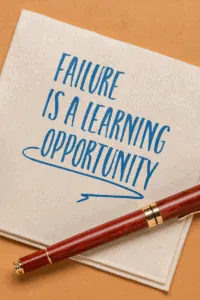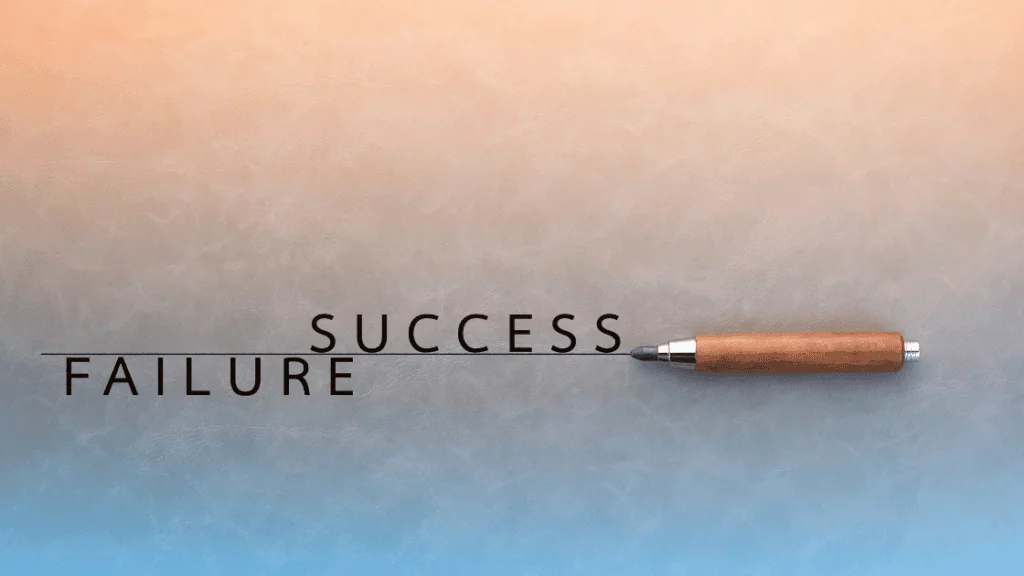In the world of creativity, failure is inevitable. It’s a term we often shy away from, yet it is an essential ingredient for growth and innovation. For creative professionals—whether you’re a graphic designer, a writer, a filmmaker, or any other type of artist—failure is not just a possibility; it’s a guarantee. However, what distinguishes successful creatives from the rest isn’t their ability to avoid failure but how they choose to view and respond to it.
This blog post explores the power of embracing failure and turning setbacks into stepping stones for growth, innovation, and developing a more resilient creative mindset.
The Importance of Viewing Failures as Learning Opportunities

Think of failure as a unique form of education. Every time a project doesn’t go as planned, we gather critical information. We learn what resonates with our audience and what falls flat, which techniques are effective and which aren’t. By treating each setback as a lesson, we continually refine our skills and build a stronger foundation for future success.
Embracing Failure for Growth and Innovation
Embracing failure fosters a mindset of growth and innovation. When you no longer fear failure, you’re more willing to take creative risks. Risk-taking is the birthplace of innovation. Many groundbreaking ideas, whether in art, design, or any other creative field, were born out of daring attempts that initially seemed destined to fail.
Consider the story of celebrated filmmaker James Cameron, whose early attempts at screenwriting and directing were filled with setbacks and missteps. Yet, these failures provided him with the necessary experience and insights to craft some of the most innovative films of our time. His willingness to embrace failure allowed him to push boundaries and experiment with new techniques that others wouldn’t dare to try.
Developing a Resilient Creative Mindset
Resilience is the ability to bounce back from setbacks, and it is a crucial trait for any creative professional. The path to creative success is not a straight line but a series of twists, turns, and occasional dead ends. Building resilience means training your mind to see failure not as a reflection of your worth or ability but as a natural part of the creative process.
To build a resilient creative mindset, consider adopting the following strategies:
- Reflect on Your Failures: Take time to analyze what went wrong without self-judgment. Identify specific areas for improvement and think about how you can apply these lessons to future projects.
- Practice Self-Compassion: Understand that failure is a universal experience, not a personal flaw. Be kind to yourself in the face of setbacks, recognizing that every creative journey includes moments of doubt and disappointment.
- Surround Yourself with Supportive Peers: A strong support network can provide valuable feedback, encouragement, and perspective when you’re feeling discouraged. Engage with others who understand the creative process and can offer constructive advice.
- Reframe Your Mindset: Shift your perspective from fearing failure to embracing it as an integral part of growth. Celebrate your failures as evidence of your willingness to step outside your comfort zone and take risks.
Success Stories Born from Setbacks
Many creative success stories began with what seemed like monumental failures. Consider the story of J.K. Rowling, who faced countless rejections from publishers before finally finding success with “Harry Potter.” Or Vincent van Gogh, whose work was largely unappreciated during his lifetime. These individuals did not allow setbacks to define their worth or deter them from pursuing their passions. Instead, they used their failures as fuel to push forward.
For every creative professional, the road to success is paved with failed attempts and unrealized ideas. Embracing these setbacks allows us to grow stronger, more innovative, and more resilient. When we stop fearing failure and start viewing it as an essential part of the creative process, we open ourselves up to new possibilities and opportunities for growth.
Conclusion: Turning Setbacks into Stepping Stones

Failure is not the opposite of success; it’s a part of it. By embracing creative failure, we allow ourselves to learn, grow, and innovate. We build resilience, develop a stronger creative mindset, and, ultimately, set the stage for our most significant success stories.
The next time you face a setback, remember: it’s not a signal to stop but an invitation to keep going, to try again, and to push the boundaries of your creativity. After all, every failure brings you one step closer to achieving your greatest creative triumphs.
By shifting your perspective on failure, you can transform setbacks into powerful catalysts for growth, innovation, and success. Embrace your creative failures—they are your most valuable teachers.
Request a Quote
Over the years we have accumulated a lot of knowledge about how to create compelling impactful marketing communications. We are here to answer any questions you might have or offer guidance to help take your project from good to GREAT! Give us a call today.
